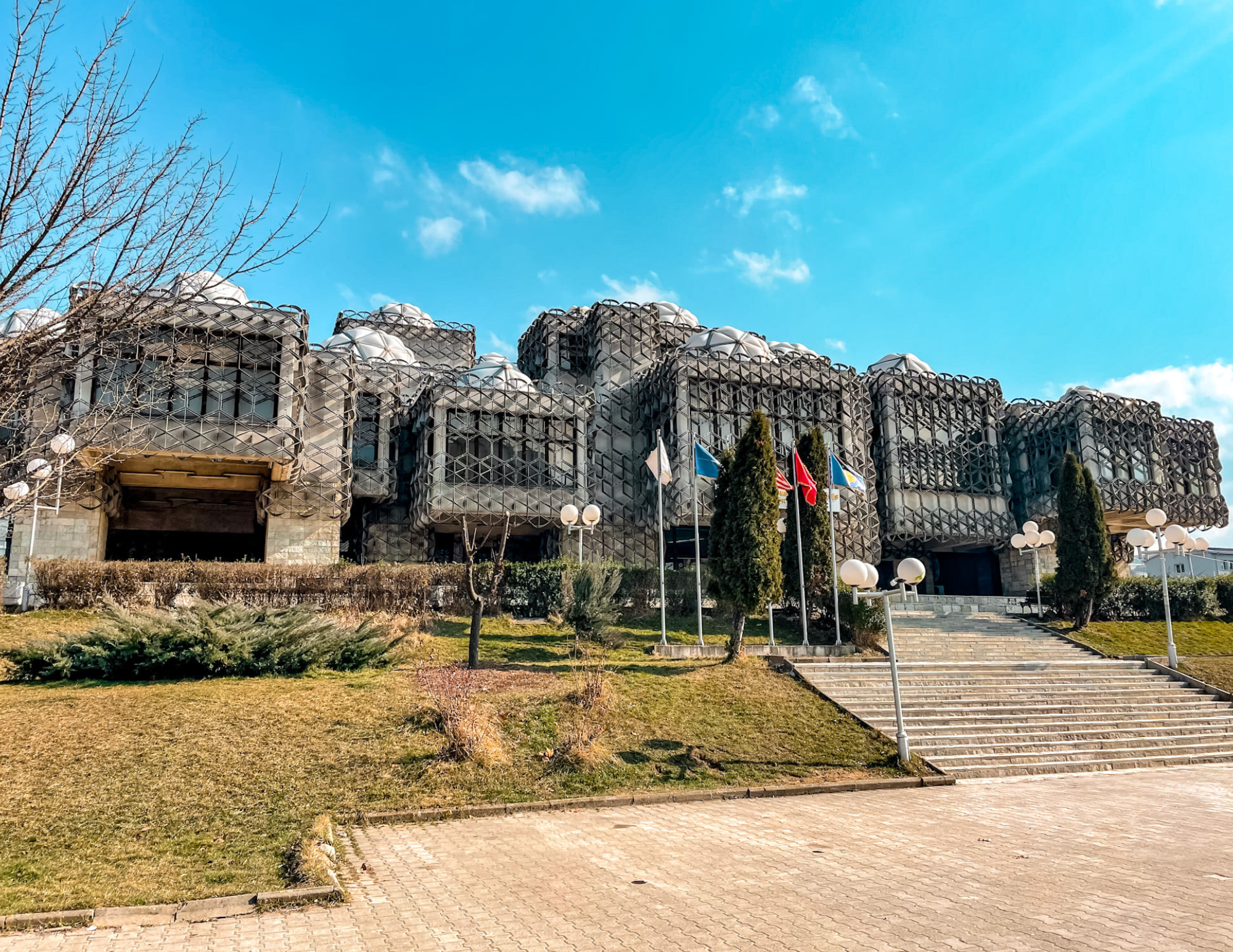Pristina, Kosovo: First Impressions from an American Visitor
Hello Pristina, Kosovo. 1hr 40 mins across the border and here we are, another day another city and country. At the border, the agent asked if I was working in Kosovo when he saw our American passports. I said no, just visiting. He said “oh you have friends here?” I said no, just coming to check out the city. He looks at me and goes, “oh wow.” Then gave the passports back and said, “have a lovely time in Kosovo.”
In the store, an older gentleman asked us where in the US we were from, we said Florida, he said he lives in New York but Kosovo is home, asked if I am here for work, I said no, just visiting. He asked if we were going around the country to a few cities and to enjoy our stay. In the elevator going up to the Airbnb, a guy asked if we are moving into the building, I said yes, he says welcome, you will love it here. I am guessing they don't get a lot of American tourists.
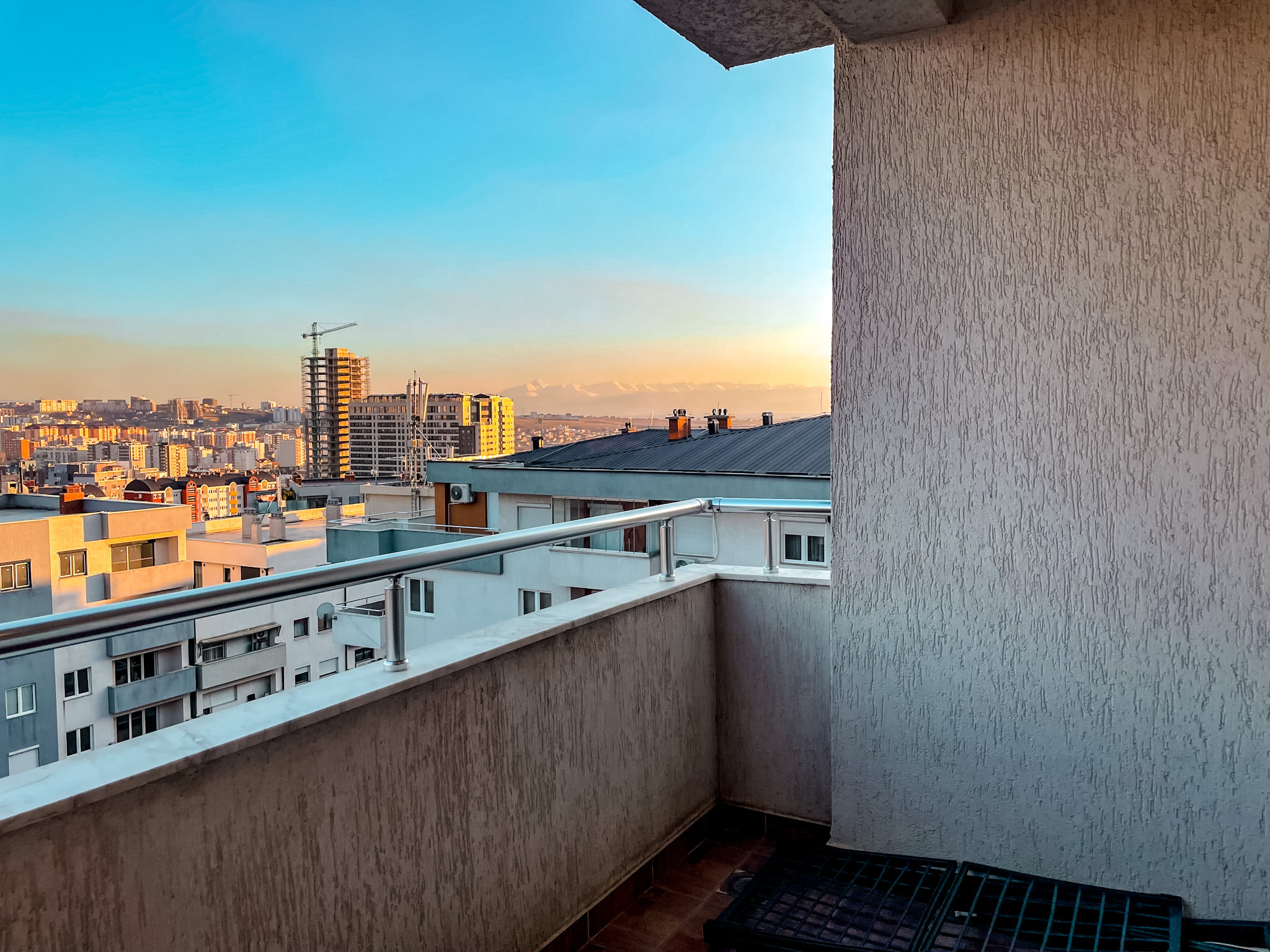
Now how do I get a job here cause obviously, that's the only reason we come here. So excited to see what you have to offer, Kosovo.
Pristina is the capital of Kosovo and the country’s political and cultural center. It’s a small, youthful city with a high student population, a complex history, and a very visible love for the United States thanks to the role the US played during the Kosovo War and independence.
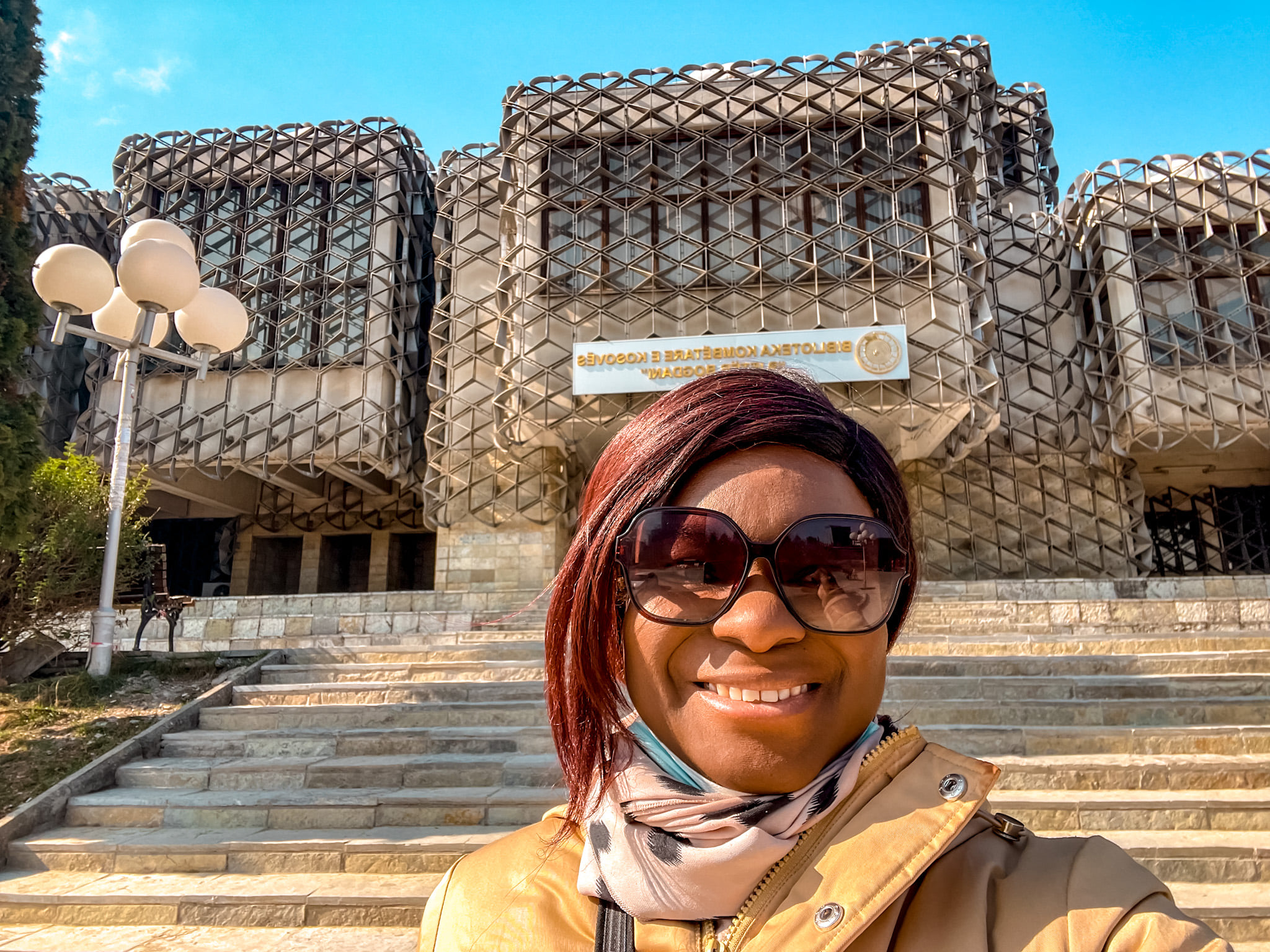
Why Pristina Isn’t “Touristy” - and Why It’s Still Worth a Stop
I can see why this city is not much of a tourist destination but it's nonetheless interesting.
Pristina doesn’t have a polished Old Town like some other Balkan cities. Instead, it’s a mix of concrete blocks, new glass buildings, street art, student energy, and powerful memorials. You come here more for recent history, politics, and local life than for postcard-perfect streets.
You’ll notice right away:
- A young population (Kosovo has one of the youngest populations in Europe).
- Coffee culture on every corner.
- English spoken more than you’d expect, especially by younger people.
- A surprising number of American flags, murals, and street names.

A Very Brief History of Kosovo (So the Monuments Make Sense)
To understand Pristina’s monuments and the love for the USA, you need a tiny bit of context:
- Kosovo was part of the Ottoman Empire for centuries, then Yugoslavia in the 20th century.
- Tensions between the ethnic Albanian majority and the Serbian state escalated in the 1990s, leading to the Kosovo War (1998–1999).
- In 1999, NATOv - led by the US - launched an air campaign against Yugoslav/Serbian forces to stop ethnic cleansing and attacks on ethnic Albanians.
- Kosovo was then administered by the UN for years before declaring independence from Serbia on 17 February 2008.
Not every country recognizes Kosovo yet, and relations with Serbia are still complicated, but for locals, 2008 is celebrated as the birth of a new state, and you feel that in the city’s monuments and memorials.
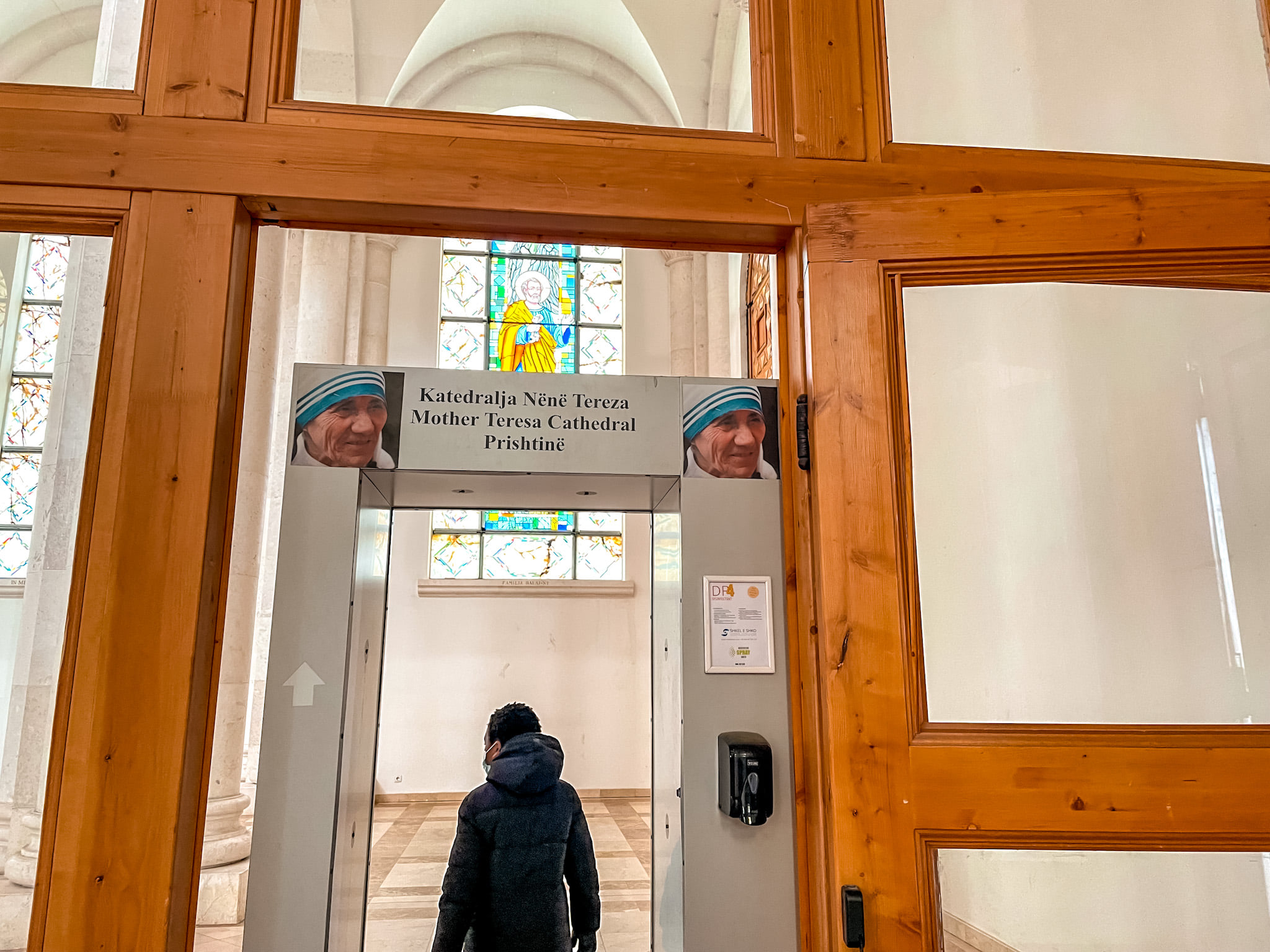
Mother Teresa Cathedral: Faith & Identity
I can see why this city is not much of a tourist destination but it's nonetheless interesting. Checked out the Mother Theresa Cathedral dedicated to the Albanian-Indian Roman Catholic nun and missionary, Saint Teresa of Calcutta.
The Cathedral of Saint Mother Teresa is one of Pristina’s most striking buildings. Construction began in 2007, it was inaugurated in 2010 and fully consecrated in 2017, on the anniversary of Mother Teresa’s death and near the centenary of her birth.
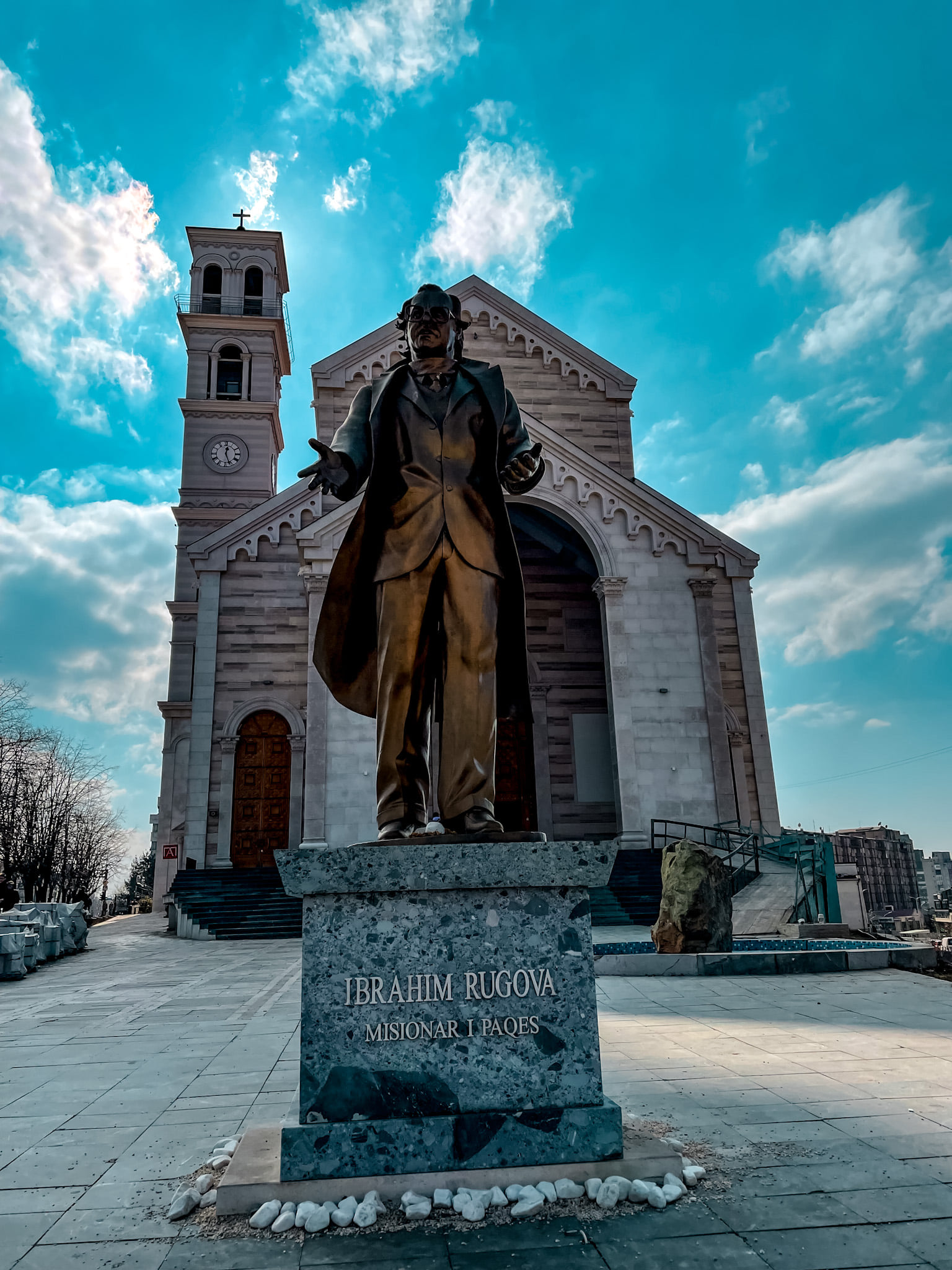
A few cool details:
- Mother Teresa was ethnically Albanian, so she’s hugely important in Kosovar identity.
- The cathedral sits on Bill Clinton Boulevard, tying together Albanian faith, national pride, and the US connection.
- You can often climb the bell tower for a panoramic view over Pristina’s low-rise skyline.
Even if you’re not religious, it’s a powerful symbol of Kosovo’s multi-faith, multi-identity story: a mainly Muslim country building a huge Catholic cathedral to honor an Albanian nun.
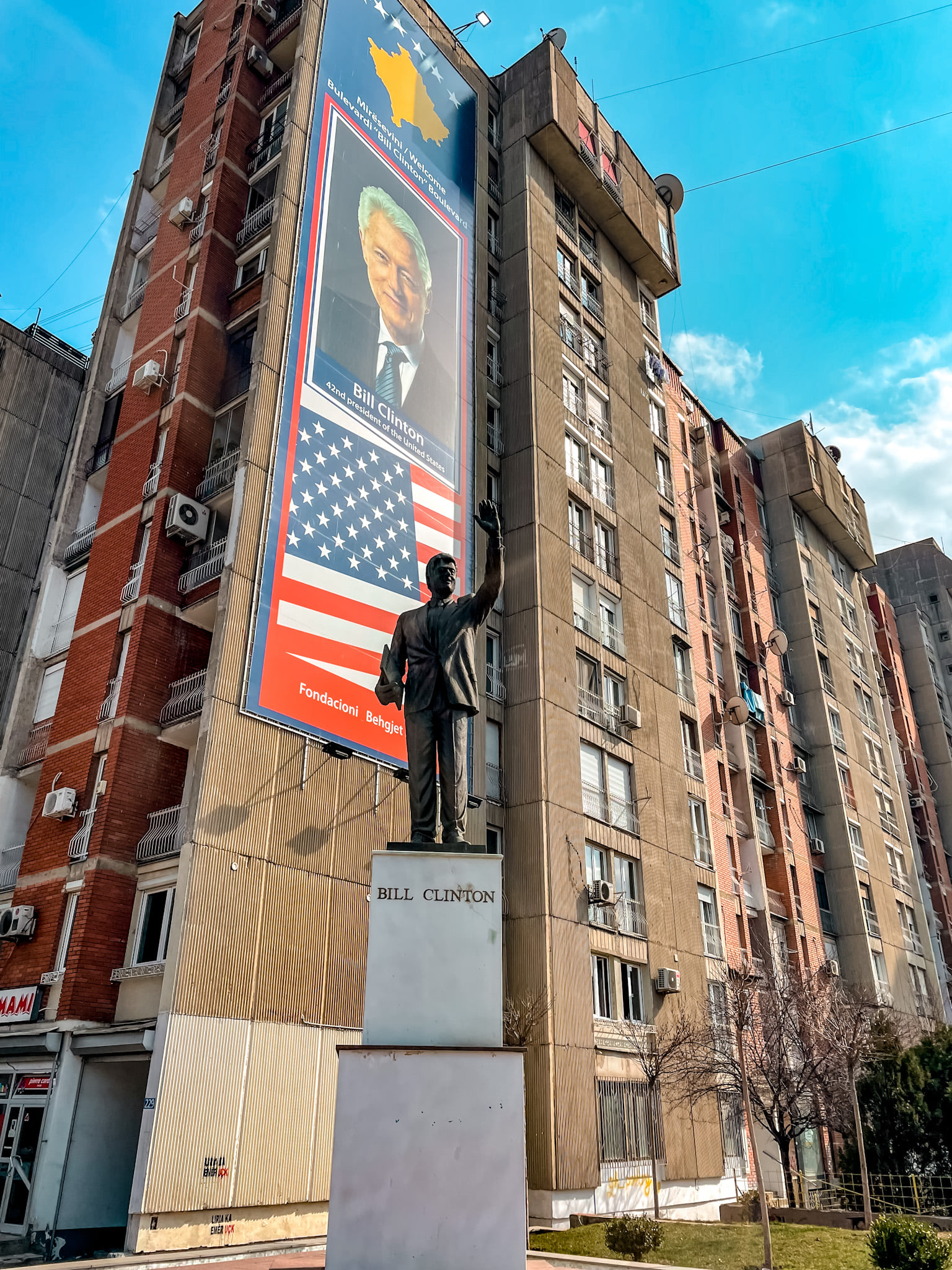
Bill Clinton Boulevard & Statue: Why the US Is Everywhere
The love they have for America shows all around. They have a Bill Clinton Statue, Boulevard, American flags all over and more.
They erected the statue to thank him for saving them by stopping a wave of ethnic cleansing by Serbia. As the U.S. President in 1999, Clinton launched NATO airstrikes to halt the killing of ethnic Albanians by Serbian troops.
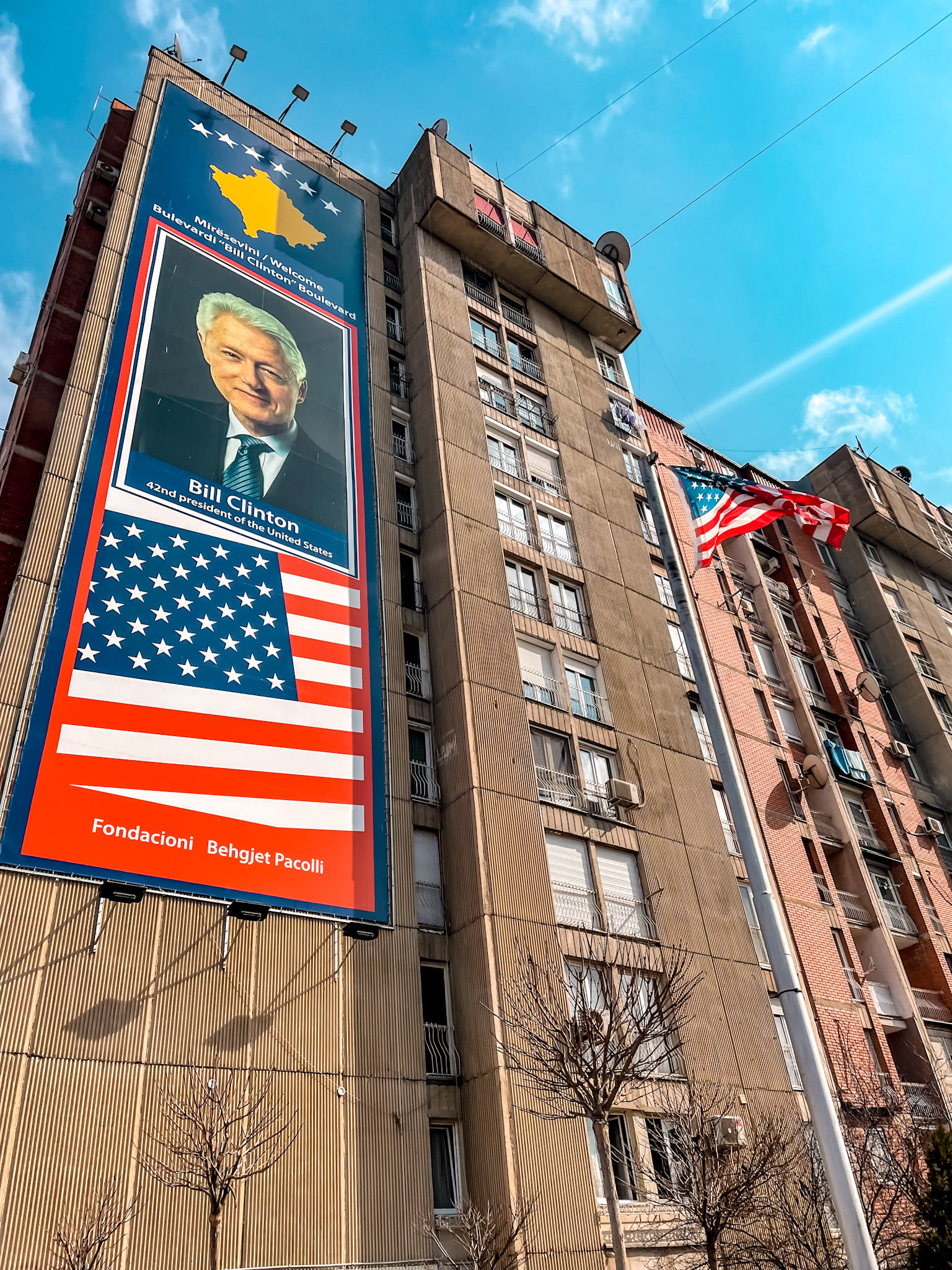
Walk down Bill Clinton Boulevard and you’ll see:
- The 11-foot bronze statue of Bill Clinton, unveiled in 2009 with the former president there in person.
- A huge mural of Clinton and often American and Kosovar flags flying nearby.
The statue, commissioned by “Friends of America, Friends of Bill Clinton,” is Kosovo’s way of saying thank you for the NATO campaign that helped end the war and paved the way for independence.
You’ll also find streets named after George W. Bush and other American figures across Kosovo, which surprises a lot of visitors from the US.
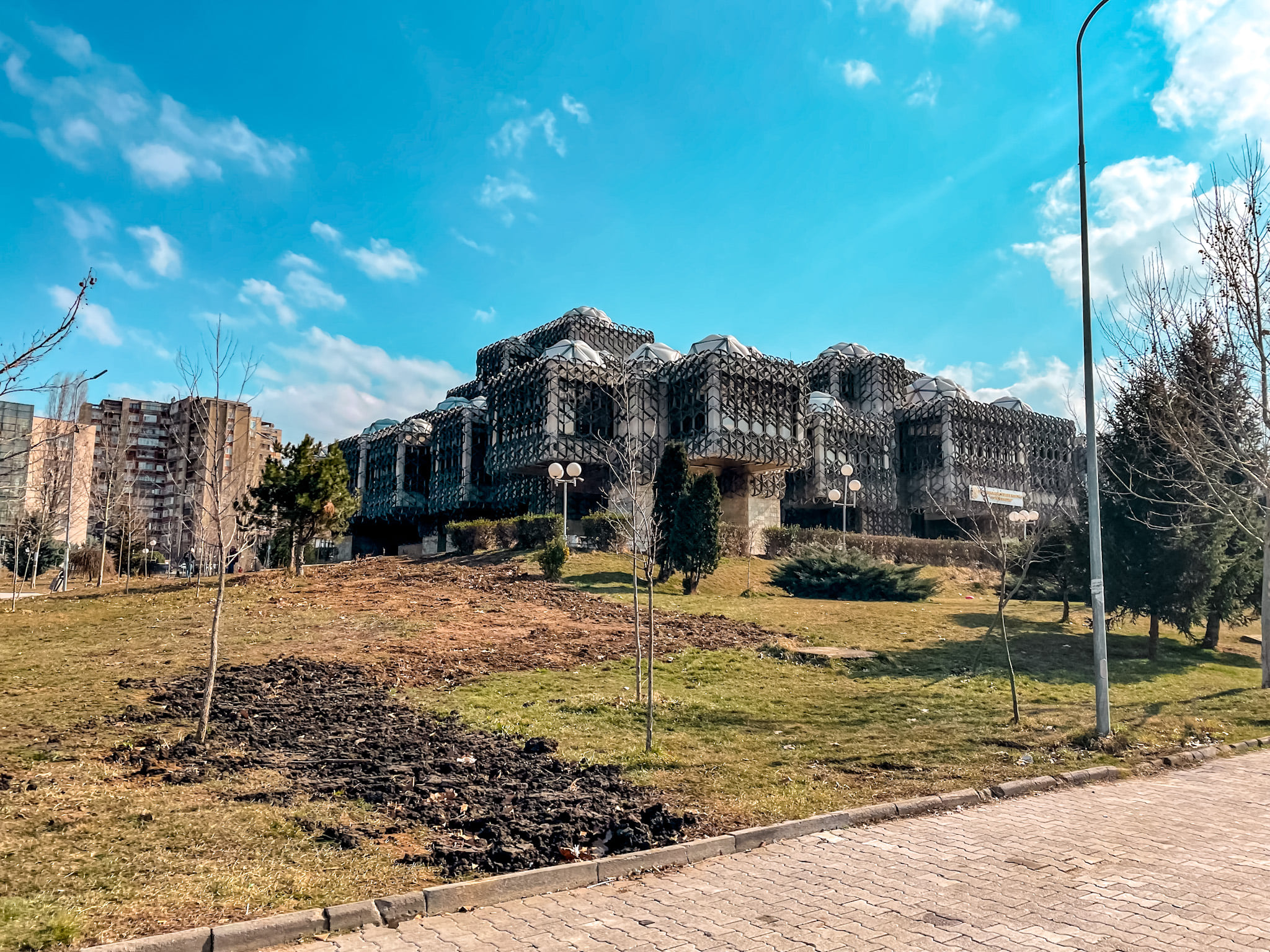
The National Library of Kosovo: The “Strange” Building You Can’t Ignore
The National Library of Kosovo, which is the highest library institution in Kosovo established by the Assembly and is located in Pristina. The mission of the library is to collect, preserve, promote and make accessible the documentary and intellectual heritage of Kosovo. It is for sure a strange building.
The National Library of Kosovo is one of the most debated buildings in the Balkans. Architect Andrija Mutnjaković designed it in the 1970s; it opened in 1982. The massive structure is:
- Composed of irregular concrete cubes crowned with dozens of white domes (officially 99).
- Wrapped in a metal “fishing-net” lattice.
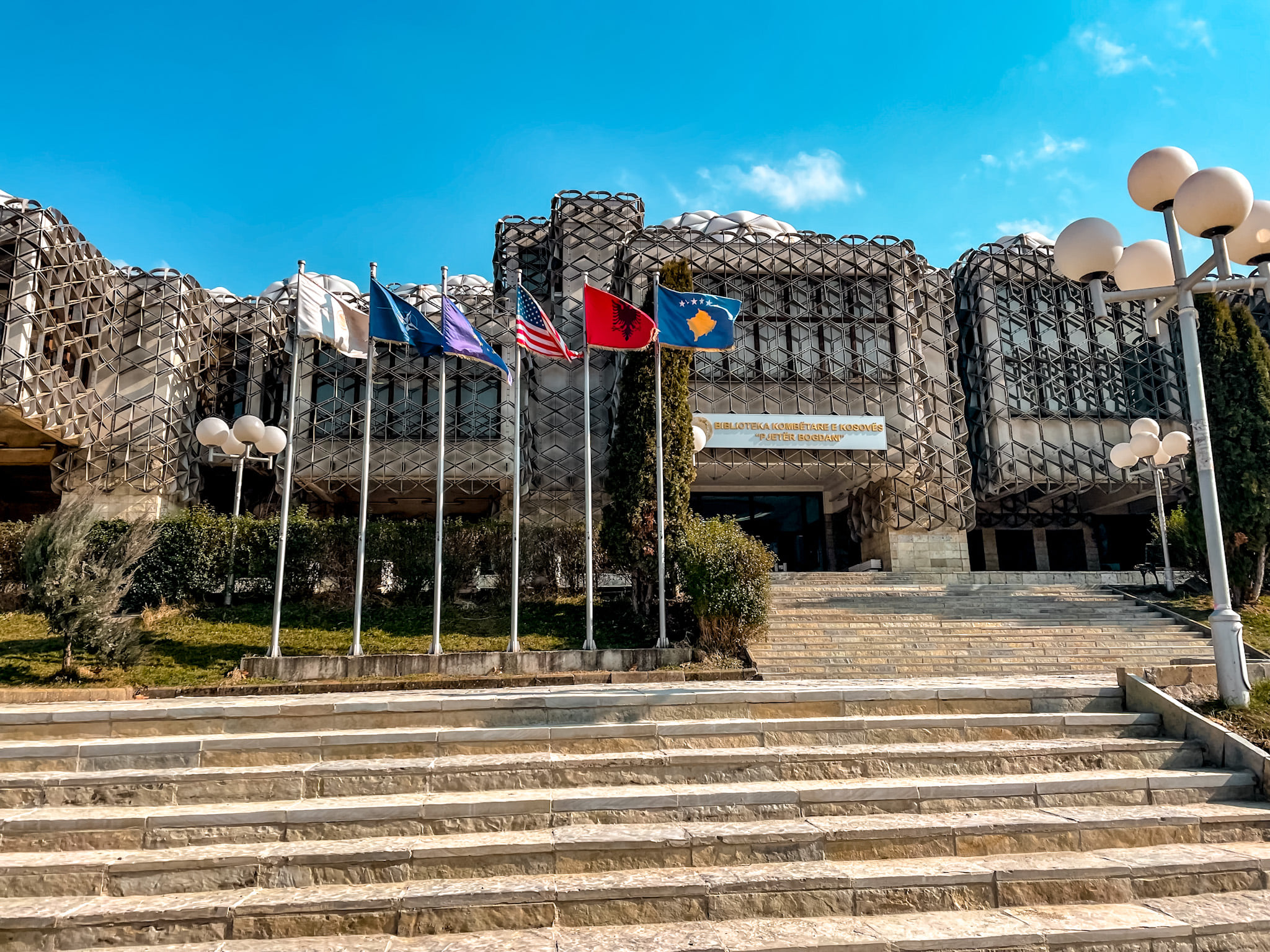
People either love it or hate it, but you can’t forget it. Inside, it holds Kosovo’s collections of books, periodicals and archival materials, plus reading rooms and a large lobby often used for exhibitions and events.
If you like architecture - especially Brutalism - this is a must-see.
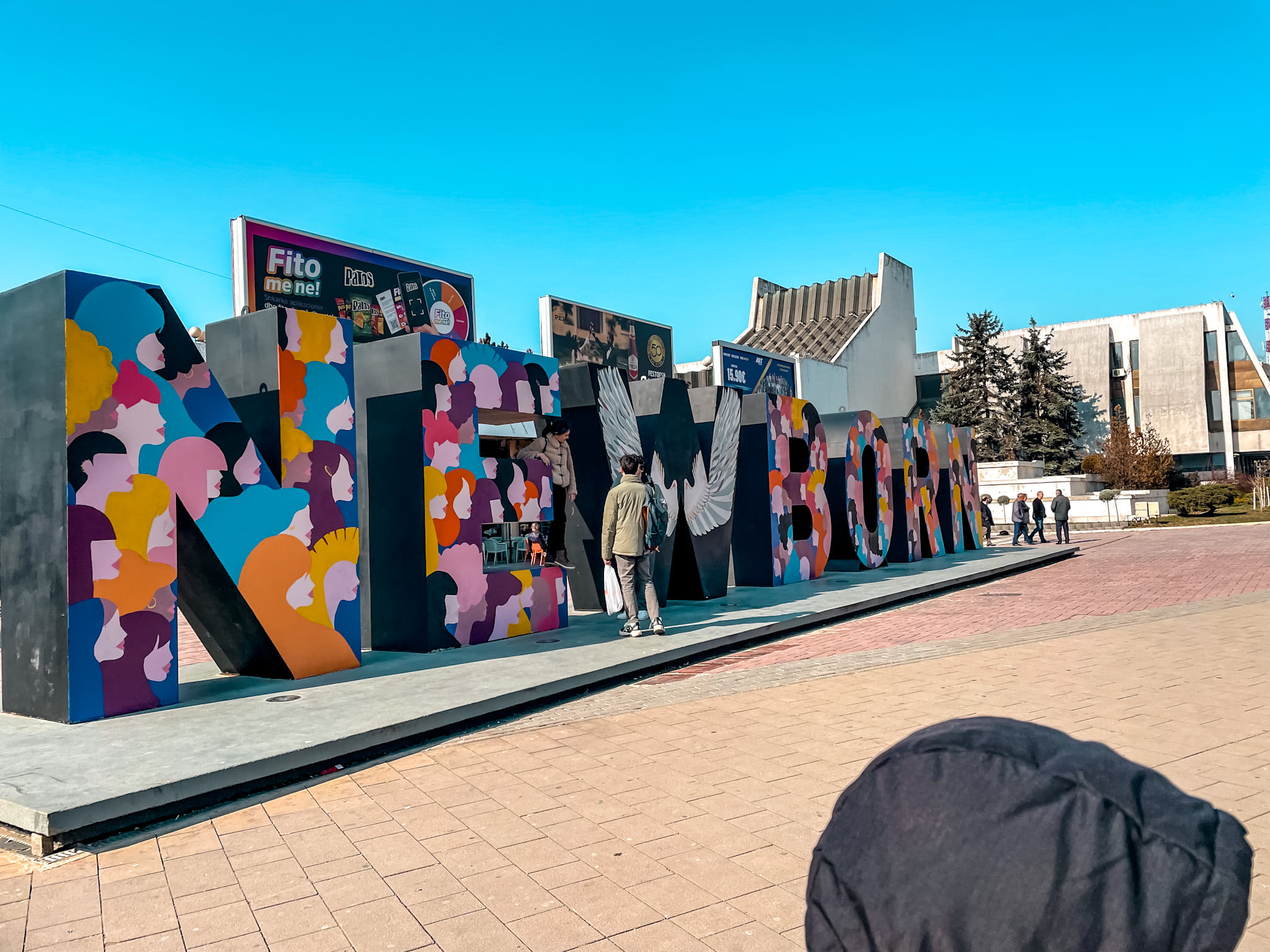
Newborn Monument: A Young Country’s Birthday Sign
The Newborn Monument in Pristina, Kosovo: This massive monument was unveiled the day Kosovo declared independence from Serbia.
The letters are repainted annually to celebrate another year of freedom.
The NEWBORN Monument is a huge block-letter sculpture that simply spells “NEWBORN” in English. It was unveiled on 17 February 2008, the exact day Kosovo declared independence.

What makes it special:
- It’s repainted with a different design each year on Independence Day, often reflecting current events, hopes, or struggles.
- It sits in front of the Palace of Youth and Sports in central Pristina, and right nearby you’ll find another powerful site: the Heroinat Memorial, a sculpture made of 20,000 pins representing women who survived sexual violence during the war.
Stand between Newborn and Heroinat and you’re basically standing in the emotional heart of modern Kosovo.
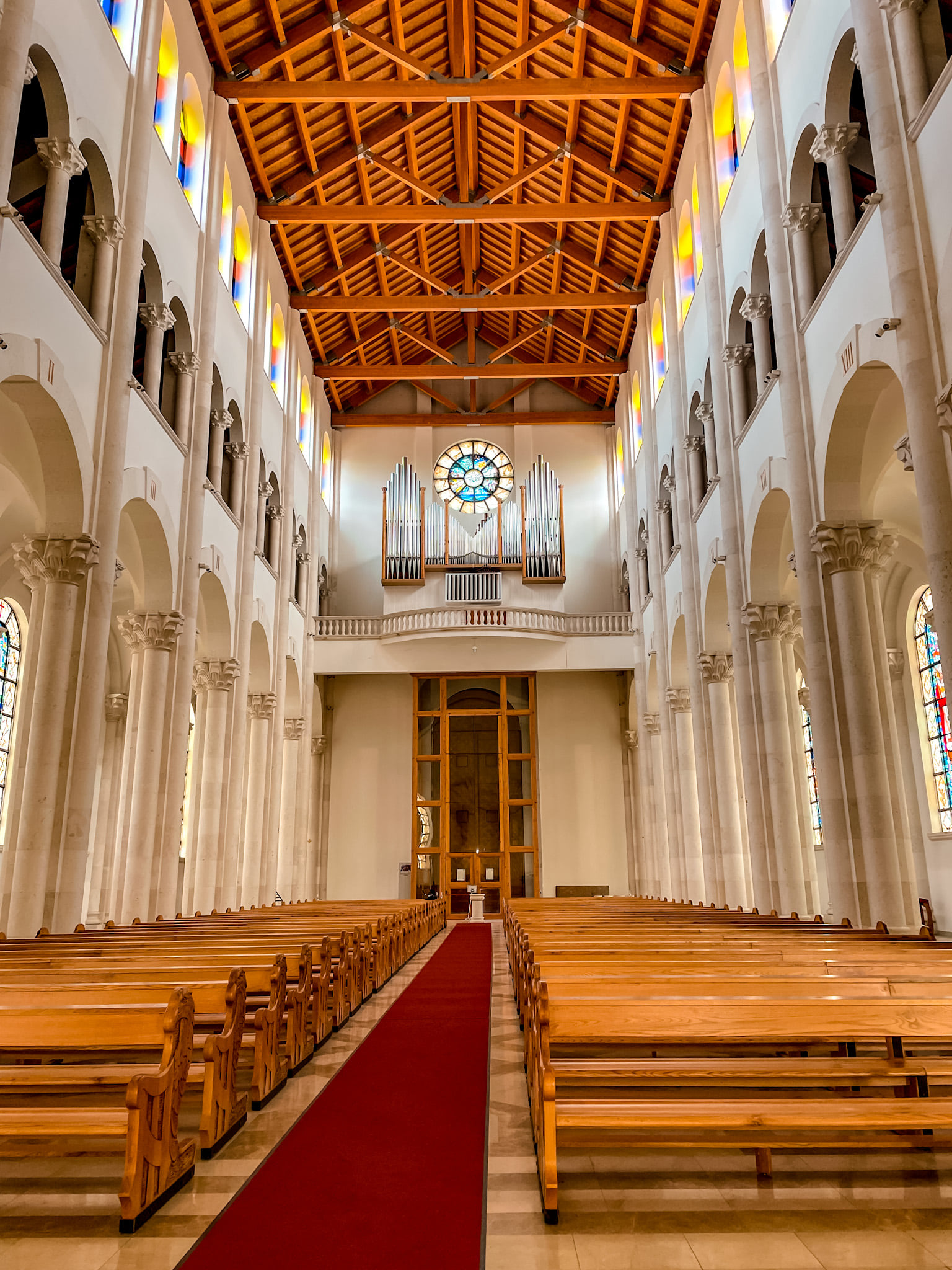
Other Things to See & Do in Pristina
If you have a day or two in the city, add these to your list:
- Mother Teresa Square & pedestrian boulevard – Central gathering area lined with cafes; great for people-watching.
- Ethnological Museum (Muzeu Etnologjik) – Set in traditional Ottoman-era houses, this is one of the best places to understand everyday Kosovar life, clothing, and customs.
- Kosovo Museum / National Museum of Kosovo – Exhibits on archaeology and the modern history of the conflict and independence.
- Imperial (Fatih) Mosque & other mosques – Beautiful Ottoman mosques that show the Islamic side of Kosovo’s culture.
- Christ the Savior Serbian Orthodox Cathedral – An unfinished church that symbolizes the complicated Serb–Albanian history here.
- Heroinat Memorial – As mentioned, a deeply moving tribute to women affected by war.
- Coffee & café culture – Pristina is all about long coffees, strong macchiatos, and late-night conversation in crowded cafes.
If you have extra time, many travelers also pair Pristina with a day trip to Prizren, a historic city with old Ottoman architecture, a riverside setting, and hilltop fortress views.

Pristina as a Student City: University Life & “School” Vibes
You asked for history and school, so yes, Pristina is very much a student city.
- The University of Pristina was officially established in 1969 and has grown into Kosovo’s main public university, with tens of thousands of students and multiple faculties (law, medicine, engineering, arts, etc.).
- For a long time, it symbolized Albanian-language higher education in Yugoslavia and played a huge role in Kosovo’s political and cultural life.
All those students mean:
- Cheap eats, busy bars, and late-night cafes.
- A lot of English speakers and an overall young, energetic vibe.
- Occasional student protests or political posters, this is a place where young people are very aware of their country’s story and future.
If you’re worldschooling or traveling with teens, it’s an interesting place to talk about university access, politics, and what it’s like to come of age in a brand-new country.
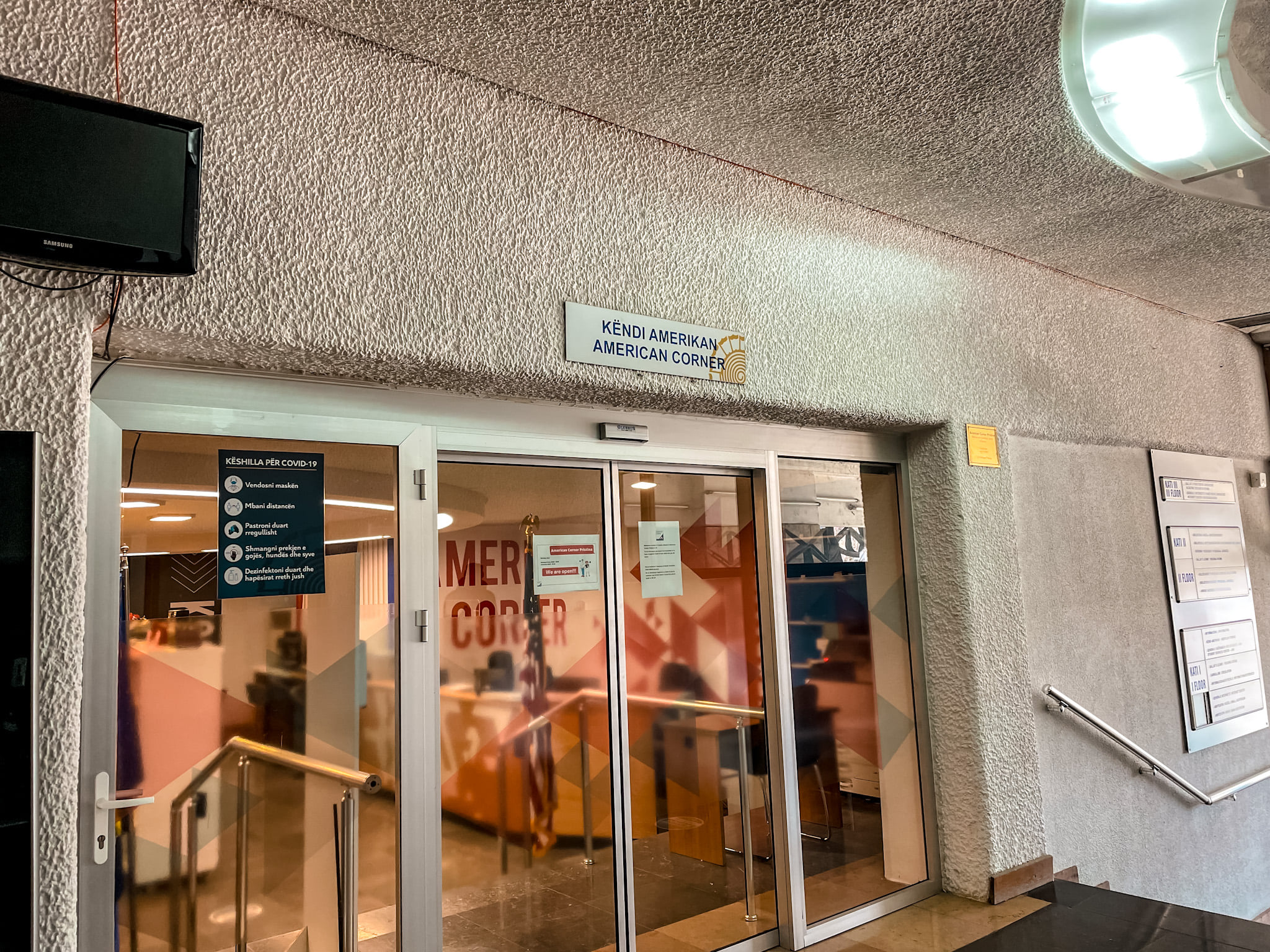
Practical Travel Tips for Pristina, Kosovo
Currency
Even though Kosovo isn’t a formal EU or eurozone member, the euro (€) is the official currency used everywhere.
- ATMs are common in the city center.
- Cards are accepted in many places, but small shops and older cafés may prefer cash.
Language
- Official languages: Albanian and Serbian.
- Many younger people speak at least some English, especially in Pristina.
Visas & Entry
For most Western travelers (including US citizens):
- No visa is required for tourist visits up to 90 days within a 6-month period.
- For work, study, or stays longer than 90 days, you need to apply for the appropriate residence or work permit.
Always double-check current rules before you travel, since visa policies can change.
Safety
For most visitors, Kosovo, and Pristina in particular, is considered safe to travel.
- Main issues are petty crime like pickpocketing, especially in busy areas.
- As with any city, keep an eye on your belongings, especially at night or in crowded bars and buses.
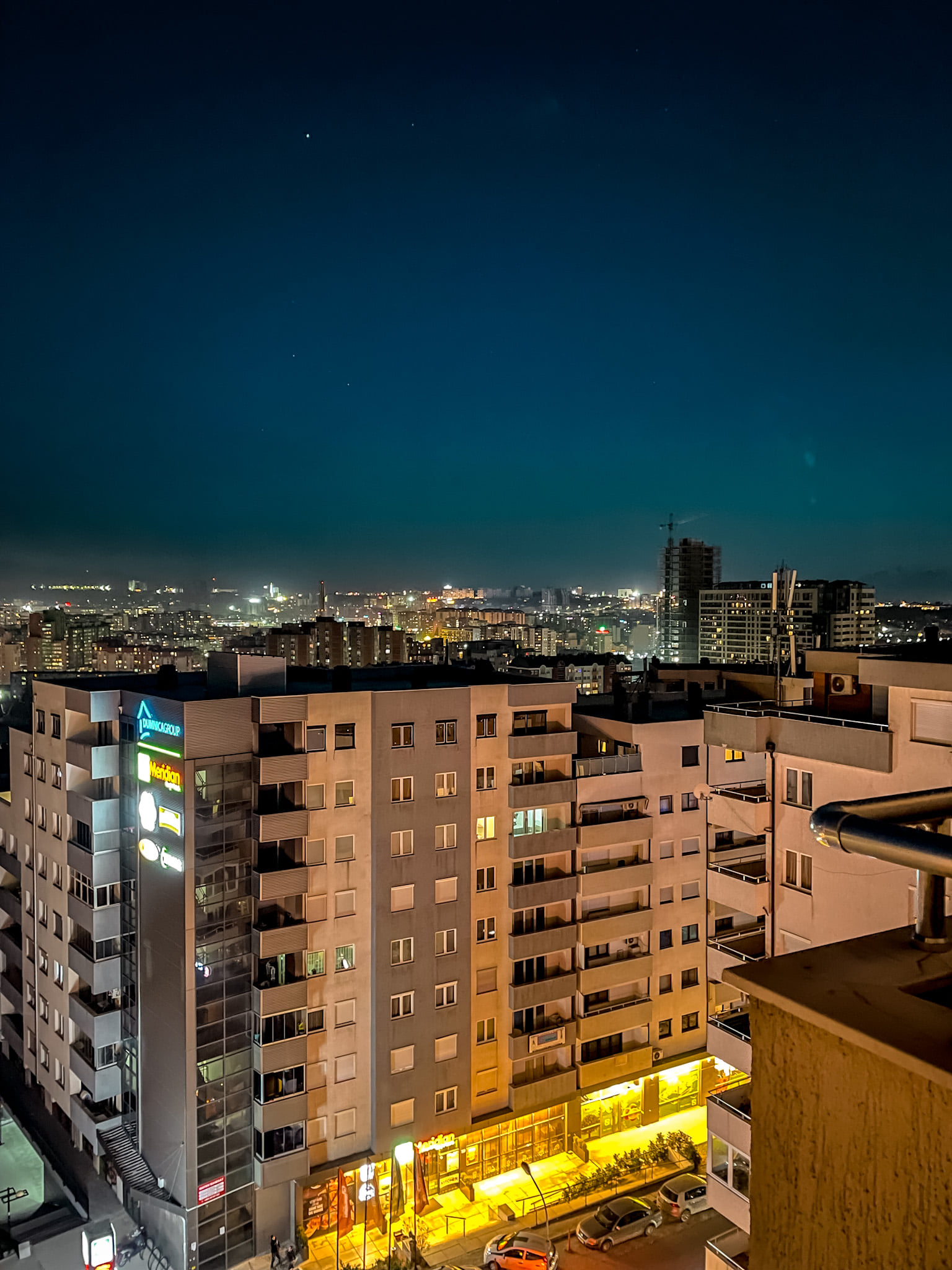
Getting There & Getting Around
- Pristina has an international airport with flights from parts of Europe.
- Many travelers arrive by bus from nearby capitals like Skopje (North Macedonia), Tirana (Albania), or Belgrade (Serbia), depending on politics and routes.
- Inside the city, most central sights are walkable, but there are also inexpensive local buses and taxis.
When to Visit
Kosovo has a continental climate: hot, often dry summers and cold, sometimes snowy winters.
- Summer (June–August): warm to hot, great for café terraces and day trips, but can be quite hot.
- Spring & autumn: pleasant sightseeing temperatures, fewer tourists, but more chance of rain.
- Winter: cold and often snowy, atmospheric, but pack proper layers.
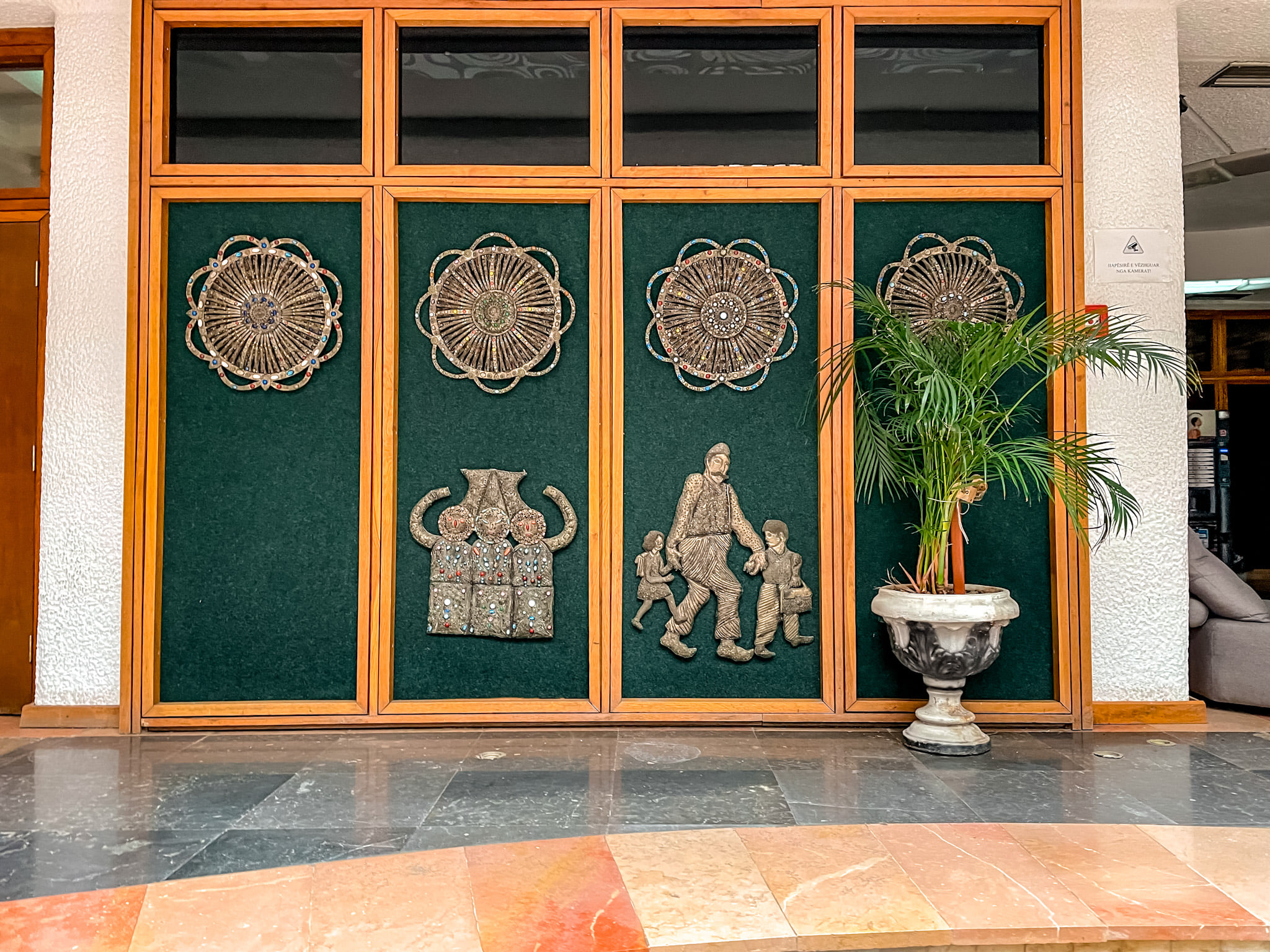
Final Thoughts: Is Pristina Worth It?
Pristina isn’t the prettiest city in Europe, but it’s one of the most interesting.
You’ve got:
- A young capital in a young country.
- Big feelings about independence and war, written across its monuments.
- A cathedral for Mother Teresa, a library that looks like a sci-fi set, and a giant “NEWBORN” sign repainted every year to mark another step forward.
- And, of course, a very visible love for America, which you’ll feel the moment people ask if you’re there for work, or just light up when you say you’re visiting “just because.”
If Pristina isn’t on someone’s Balkans itinerary yet, I’d say add a day or two. Come for the history and politics, stay for the coffee, the friendliness, and that feeling of watching a country still writing its story in real time.
